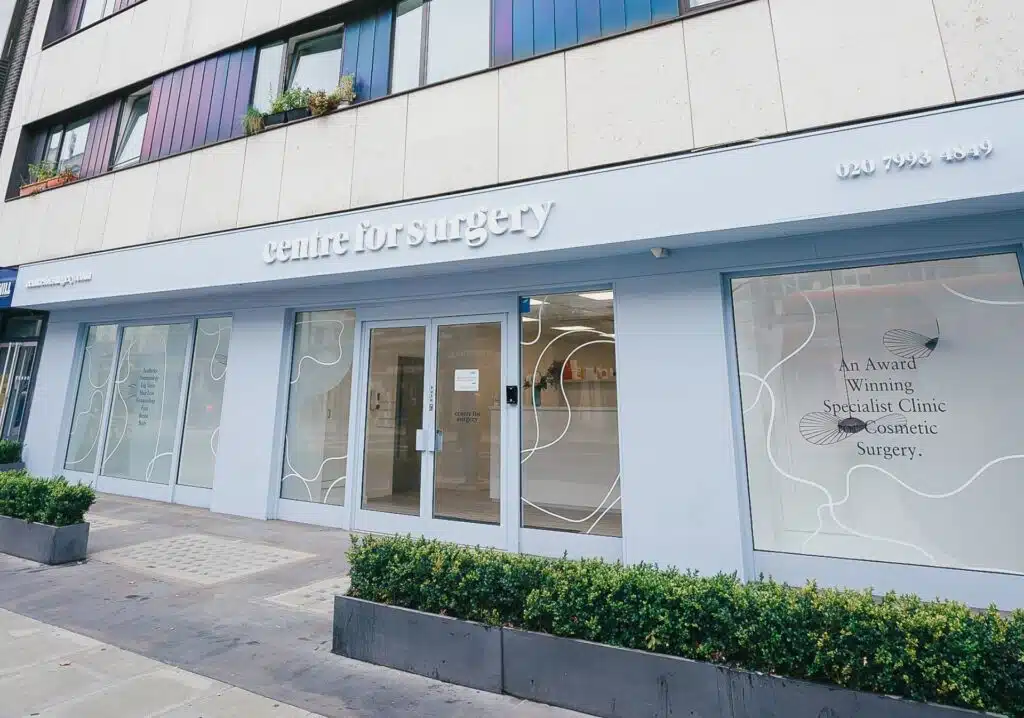Exploring Eyelid and Forehead Rejuvenation: Understanding Blepharoplasty and Forehead Lift Procedures
When it comes to rejuvenating the eye area, two popular surgical options often come to mind: blepharoplasty and forehead lift. Each of these procedures targets different concerns and areas around the eyes and forehead.
RELATED: Blepharoplasty vs Brow Lift – Which One Is Right For Me?
Blepharoplasty, commonly known as eyelid surgery, is a choice for individuals looking to tackle issues like drooping eyelids or bags under the eyes. This procedure focuses on removing or repositioning excess skin and fat in the upper and lower eyelids. It’s an effective way to refresh the appearance of the eyes, making them look more open and youthful.
On the other hand, a forehead lift, sometimes referred to as a brow lift, is aimed at smoothing out wrinkles on the forehead and lifting the eyebrows. This surgical approach not only addresses the signs of ageing on the forehead but also impacts the overall position and appearance of the eyebrows, offering a more alert and refreshed look.
At Centre for Surgery, our team of skilled plastic surgeons is equipped to perform both blepharoplasty and forehead lifts. We pride ourselves on our meticulous attention to detail and a deep commitment to ensuring our patients’ satisfaction. Our approach involves helping you understand each procedure’s nuances, what you can expect during the surgery, and the kind of results it can deliver.
Choosing between blepharoplasty and a forehead lift depends on your specific aesthetic goals and the unique characteristics of your face. Our experts at Centre for Surgery are here to guide you through this decision-making process, ensuring that the chosen procedure aligns perfectly with your desires and expectations. By opting for our services, you can rest assured that you’re in capable hands, and we’ll be dedicated to helping you achieve the rejuvenated appearance you’re aiming for.
Understanding the Distinctive Approaches of Blepharoplasty and Forehead Lift Surgeries
Blepharoplasty Explained: Enhancing the Aesthetics of Your Eyelids
Blepharoplasty, widely recognised as eyelid surgery, is a transformative procedure designed to revise the appearance of both the upper and lower eyelids. The primary objective of this surgery is to remove excess skin, fat, and occasionally muscle from the eyelid area. It serves a dual purpose: aesthetically, it rejuvenates the eye region by reducing droopiness and puffiness, and functionally, it can significantly improve vision for those whose sagging eyelids obstruct their sight.
This procedure is carefully tailored to individual needs. For some, it may involve addressing the upper eyelids to eliminate the ‘hooded’ appearance that often comes with age. For others, the focus might be on the lower eyelids, where removal or repositioning of fat can reduce under-eye bags. In many cases, blepharoplasty results in a more youthful, alert, and refreshed appearance of the eyes.
Forehead Lift: Refining the Upper Face and Brow Area
A forehead lift, also known as a brow lift, targets the upper face, specifically the forehead and eyebrow areas. This cosmetic surgery is particularly beneficial for those experiencing sagging eyebrows, pronounced forehead wrinkles, or deep furrows. The technique involves making incisions strategically placed either along the hairline or in the scalp.
RELATED: Upper Facelift – Forehead Lift Surgery
The primary goal of a forehead lift is twofold. Firstly, it aims to elevate the eyebrows to a more youthful and desirable position. This adjustment not only enhances the appearance of the eyebrows themselves but also impacts the overall facial expression, often making the face look more open and less tired. Secondly, the surgery smooths out wrinkles and lines on the forehead, contributing to a more refreshed and smoother facial appearance.
RELATED: Exploring the Gliding Brow Lift: A Revolutionary Approach to Forehead Rejuvenation
Both blepharoplasty and forehead lift surgeries are intricate procedures that require a high level of expertise. They each offer unique benefits and can dramatically improve one’s appearance. The choice between the two depends largely on the specific areas of concern and the desired outcomes. With expert guidance and careful consideration, individuals can select the procedure that best aligns with their aesthetic goals.
Identifying Ideal Candidates for Blepharoplasty and Forehead Lift Procedures
Suitability for Blepharoplasty: Enhancing Eyelid Appearance
Blepharoplasty, commonly known as eyelid surgery, offers a solution for those seeking to rejuvenate the eye area. Ideal candidates for this procedure typically exhibit certain characteristics:
- Overall Health: Good physical health is a prerequisite. This ensures that the body can heal effectively post-surgery and reduces the risk of complications.
- Eyelid Conditions: Individuals with droopy or puffy eyelids are prime candidates. Blepharoplasty can correct these issues, contributing to a more youthful and refreshed eye appearance.
- Realistic Expectations: It’s important for candidates to have a clear understanding of what blepharoplasty can achieve. While it significantly improves the eyelid appearance, it addresses specific ageing signs and is not a panacea for all facial ageing issues.
- Non-Smokers: Smoking can impede the healing process and increase the risk of surgical complications. Therefore, non-smokers or those willing to quit smoking temporarily are better suited for this surgery.
Forehead Lift: Addressing Upper Facial Ageing
A forehead lift, or brow lift, is aimed at individuals who experience ageing signs in the upper face. Suitable candidates for this procedure often include:
- Sagging Eyebrows: Those with drooping eyebrows can benefit from a forehead lift, which elevates the eyebrows to a more youthful position.
- Forehead Wrinkles: Deep lines and wrinkles on the forehead can be effectively smoothed out, offering a more refreshed facial appearance.
- Understanding of Limitations: Candidates should recognise that a forehead lift targets specific ageing aspects and is not a comprehensive solution for all facial ageing.
Consultation at Centre for Surgery: Personalised Assessment
For individuals considering either blepharoplasty or a forehead lift, a consultation with a qualified plastic surgeon at Centre for Surgery is crucial. This consultation allows for a thorough evaluation of the individual’s medical history, skin condition, and unique facial features, including eye shape. Such an assessment ensures that the chosen procedure aligns with the patient’s specific needs and aesthetic goals.
Comparing Blepharoplasty and Forehead Lift: Preoperative, Intraoperative, and Recovery Phases
Preparation for Blepharoplasty and Forehead Lift
The journey towards both blepharoplasty and forehead lift begins with similar preparatory steps. These include:
- Selecting the Right Surgeon: Choosing a surgeon with the requisite expertise and experience in facial cosmetic surgery is crucial.
- Informed Consent: Understanding and signing consent forms ensures that you are aware of the potential risks and benefits of the procedure.
- Preoperative Instructions: It is essential to adhere to the surgeon’s guidelines prior to surgery, such as fasting rules or medication adjustments.
- Medication and Supplement Review: It is important to inform your surgeon about any medications or supplements you’re taking, as some may need to be temporarily discontinued.
Each procedure has its own specific preparation requirements, which your surgeon at Centre for Surgery will discuss during your consultation.
During the Procedures
- Blepharoplasty:
- Anaesthesia: This surgery is often performed under local anaesthesia or intravenous sedation.
- Incisions: Small cuts are made in the eyelids to access and remove excess skin and fat.
- Muscle and Fat Adjustment: In some cases, muscles are tightened and fat is repositioned for optimal results.
- Forehead Lift:
- Anaesthesia: Usually conducted under general anaesthesia.
- Incisions: Incisions are made in the scalp.
- Lifting Tissues: The skin and underlying tissues of the forehead are lifted to address sagging eyebrows, wrinkles, and furrows.
Recovery Phases
- Blepharoplasty Recovery:
- Duration: Approximately 1-2 weeks.
- Symptoms: Expect swelling, bruising, and some discomfort.
- Care: Avoid strenuous activities and sun exposure, and follow postoperative instructions closely.
- Forehead Lift Recovery:
- Duration: Also typically 1-2 weeks.
- Symptoms: Similar to blepharoplasty, with swelling, bruising, and discomfort.
- Additional Measures: You may need to wear a bandage or compression garment to support healing tissues.
Both procedures require diligent postoperative care to ensure optimal healing and the best possible aesthetic outcomes. Your surgeon will provide detailed instructions tailored to your specific procedure and needs.
FAQs about Blepharoplasty and Forehead Lift
What Will My Eyes Look Like Immediately After Undergoing Blepharoplasty or a Forehead Lift?
After undergoing a blepharoplasty or forehead lift, it’s normal to notice significant swelling and bruising around the eyes, which is a natural body response as it embarks on the healing journey. Initially, you might also experience discomfort, a common postoperative sensation that can be alleviated with prescribed pain relief medications. Your surgeon might apply bandages or special adhesive tapes to safeguard the delicate incision areas and promote healing. Adhering to the bespoke postoperative care instructions provided by your surgeon, including guidance on bandage removal and scheduling follow-up consultations, is pivotal for achieving the desired aesthetic outcome. As the healing process progresses, swelling and bruising will diminish, unveiling the rejuvenating effects of your procedure.
During Blepharoplasty or a Forehead Lift, Will I Be Conscious?
The choice of anaesthesia for blepharoplasty and forehead lift surgeries varies, including local anaesthesia accompanied by sedation or general anaesthesia to ensure a pain-free experience. Local anaesthesia with sedation numbs the surrounding eye area, allowing you to remain awake but in a relaxed state throughout the procedure. On the other hand, general anaesthesia induces sleep, ensuring you’re completely unaware during the surgery. The decision on the type of anaesthesia is tailored to each patient, considering the surgery’s scope, medical history, and personal preferences, with your surgeon offering expert advice to select the most appropriate option. Irrespective of the anaesthesia type, patient safety and comfort are paramount, with meticulous monitoring throughout the surgery and recovery period until you’re fully alert and ready to head home.
How Painful Is the Recovery After Blepharoplasty?
Postoperative recovery from blepharoplasty typically involves mild to moderate discomfort and tenderness in the eye, forehead, or temple areas. This discomfort is manageable with either over-the-counter or prescription medications, as your surgeon recommends. It is crucial to closely follow your surgeon’s postoperative care advice, including medication adherence, attending follow-up appointments, and refraining from vigorous activities until given the all-clear. Although the recovery phase may present some discomfort, many patients find the enduring benefits of a more youthful and revitalized appearance to far outweigh temporary inconveniences.
Is a Forehead Lift Considered Major Surgery?
A forehead lift, while not classified as major surgery due to the absence of extensive incisions or lengthy hospital stays, remains a significant surgical procedure that demands meticulous planning and precision. It involves detailed techniques to enhance forehead skin smoothness and elevate the brows, thereby requiring a skilled surgical approach.










